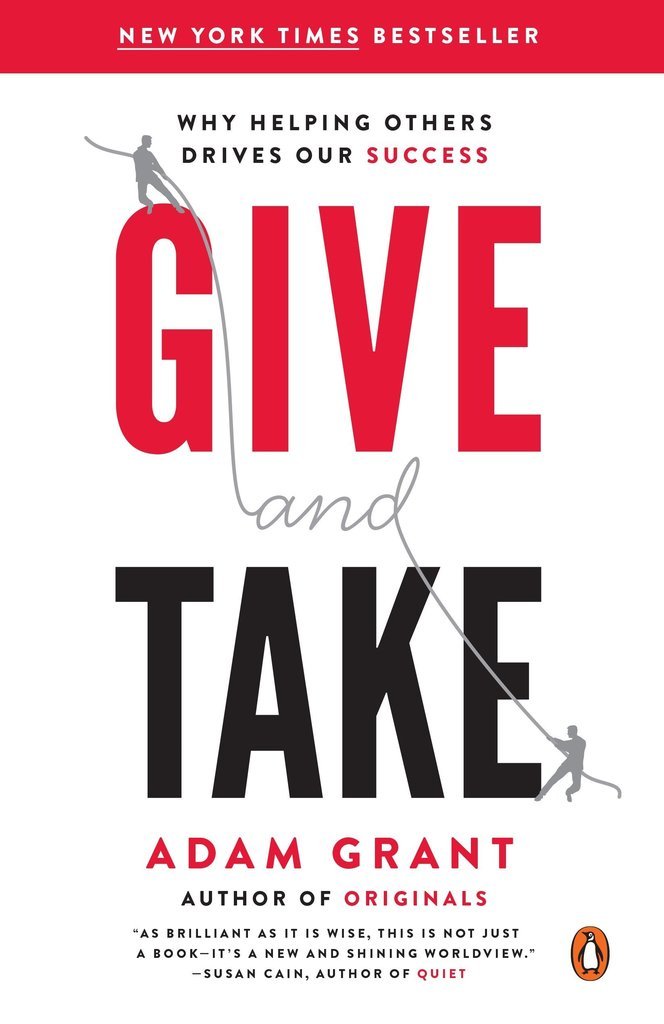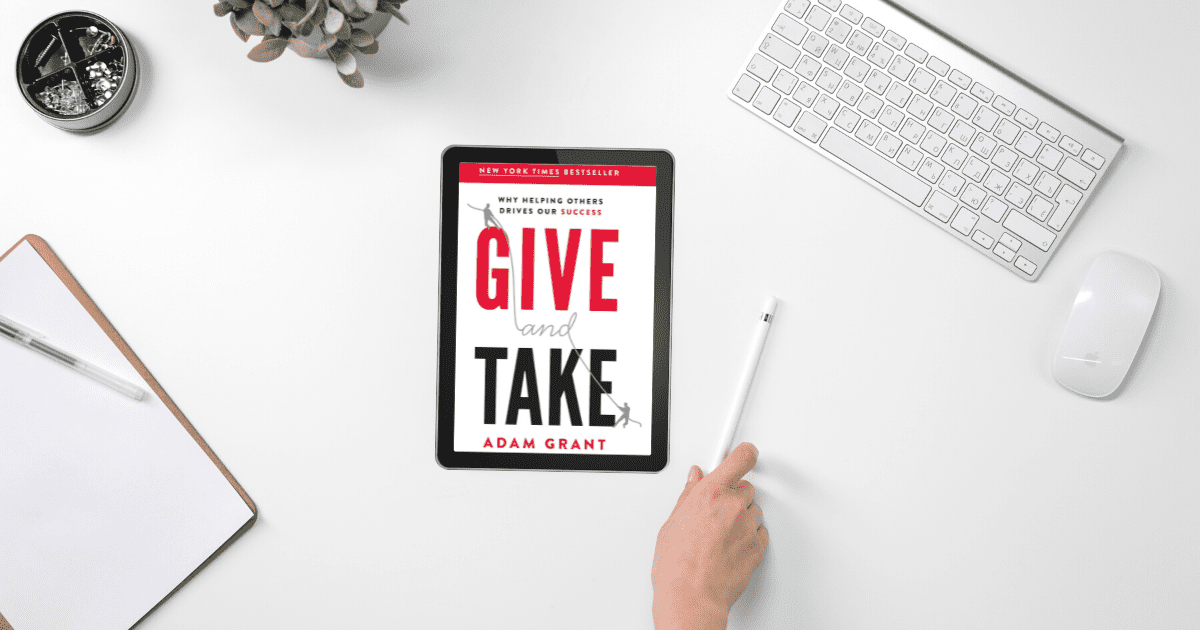Give and Take, by Adam Grant (Review)

Get your copy:
Disclosure: This post may contain affiliate links, which means I may receive a commission if you click a link and purchase something that I have recommended. Please read my disclaimer for more details.
 Give and Take: A Revolutionary Approach to Success by Adam M. Grant
Give and Take: A Revolutionary Approach to Success by Adam M. GrantMy rating: 5 of 5 stars
In December, I picked up a copy of Give and Take: A Revolutionary Approach to Success by Adam Grant at the library. It was on display and caught my attention. After reading the back cover, I decided to give it a try. Being a non-fiction, hardcover book with small print, it took me forever to read, but it was worth it.
Give and Take looks at people’s natural propensity to be either givers, takers, or matchers. Givers are people who, well, do what you would think they do. They give more than they take.
They’re naturally generous. They want to share their time, their energy, their expertise, their connections. They take genuine joy in seeing other people succeed and get ahead, even if it’s to their own detriment.
Takers, on the other hand, take more than they give. They’re always looking at what’s in it for me. How can I get ahead? Why should I do this for you? And matchers are people who look to give as much as they take. They don’t want to be walked on, but they do want to be generous.
The book looks at a whole bunch of different case studies and scenarios and tons of people in all different kinds of industries from basketball coaches to venture capitalists, to tech CEOs, to teachers. It looks at specific stories from their lives and examines how their propensity to give or take played out for them.
Grant asks questions like who gets further ahead in life and in business: givers or takers and why? And what are the co-occurring tendencies that go along with being a giver or a taker? Is it better to be one or the other? What are the downfalls of each?
What I especially liked about it is that, while it does thankfully, and hopefully not surprisingly, conclude that it is more advantageous to be a giver rather than a taker, it doesn’t ignore the fact that givers often don’t get ahead in the short-term. And that there are certain downfalls that people who are overly generous are more apt to fall into.
For example, in the workplace, somebody who is really generous with their time could end up being less productive and advancing less quickly in their career because maybe their door is always open, they’re always available to help colleagues or junior members of their team to answer their questions, to solve problems for them to make connections for them, to train them,
or even just to discuss ideas. They have a harder time saying no to people and just getting their own work done.
What I really like about the book is that Adam Grant takes the time to look at strategies that people who have these tendencies can use to overcome that. For example, givers can avoid giver burnout by chunking the time that they spend giving. So instead of giving an hour every day, it would be more advantageous for a giver to do all of their giving once a week for four or five hours. This gives them time during the rest of the week to be productive, while still deriving the joy and benefits that they personally get from being a giver. And because all their giving happens in one larger timeframe, it actually has a more positive effect on them and bolsters them to keep giving.
Likewise, givers can set up quiet times at work where they say, “My door is shut right now, I need to do some work, and I’m not available to help, but this is when I will be available to help you.”
Another strategy he recommends is encouraging the people that you help to pay it forward. So if you are a mentor with several mentees, you can set up a system where the people you mentor can actually go on and mentor other people as well. Or you might develop training documents so that instead of having to help each person individually, you’re able to help multiple people with the same investment of your time.
I thought this was a really worthwhile read. It did take me a bit longer because it was almost 300 pages and it was quite solid, but it was such a good read. And part of why it took me so long is because I was taking so many notes. I do relate to being the type of giver who will put their needs last and end up getting burned out or paying a high price for not knowing where to draw a line.
I appreciated knowing that givers can succeed and even achieve greater long-term success than takers. I was encouraged to learn that it’s completely worthwhile to be a giver and to cultivate those tendencies, but that there are specific ways to do it more wisely so you don’t get burned out or put yourself in a position to be taken advantage of by others.
Originally published in 2013, Give and Take is a bit of an older book, but it’s worth checking out, especially, if this is something you relate to. If you do feel burned out from giving too much, or if you’re just trying to figure out how to be more generous with your time without feeling like you have nothing left to give, then definitely give it a read.
Rating: 5 stars (I loved it!)
View all my reviews
I’m Sophie. I’m a writer, homeschooling mama, and recovering overachiever. I get by on good books, chocolate, and just enough sleep.
Introduce yourself in the comments below and tell me what kind of books you love to read.







